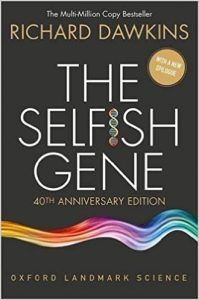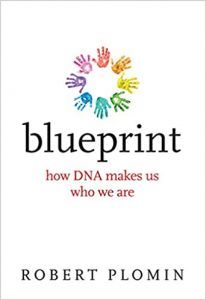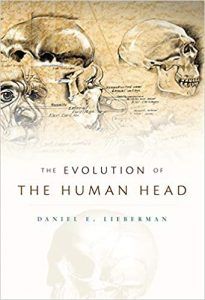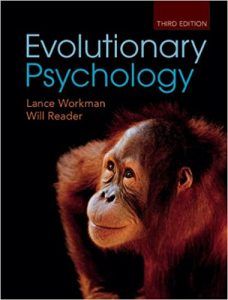Epigenetics vs Genetics: How Do Genes Influence Behavior?
 Richard Dawkins’s book The Selfish Gene created a considerable stir when it was first published in 1976.
Richard Dawkins’s book The Selfish Gene created a considerable stir when it was first published in 1976.
At that time, no one knew for sure exactly what a gene was, what they looked like, or how many existed. Yet, the brilliance of Dawkins’s work was that he side-stepped these issues.
His story was one of how genes created “survival machines” (including humans) that behaved in such a way that they could survive long enough to pass those genes on to the next generation (Dawkins, 2006).
This article introduces the concepts behind genetics and epigenetics and their role in influencing human behavior.
Before you continue, we thought you might like to download three Positive Psychology Exercises for free. These science-based exercises explore fundamental aspects of positive psychology, including strengths, values, and self-compassion, and will give you the tools to enhance the wellbeing of your clients, students, or employees.
This Article Contains:
- Do Genes Influence Behavior? Genetic Psychology Explained
- Epigenetics Explained: 3 Examples
- Gene Expression: How Does Epigenetics Work?
- 6 Mechanisms and Factors of Epigenetics
- 5 Recommended Books
- 4 Best Podcast Episodes on the Topic
- PositivePsychology.com’s Relevant Resources
- A Take-Home Message
- References
Do Genes Influence Behavior? Genetic Psychology Explained
Genes influence human behavior, but not directly. They don’t take charge of who we are or each behavioral decision; instead, they set us up beforehand, then let us go, “sitting back passively inside” (Dawkins, 2006).
And yet, that is not to suggest our behavior is predetermined. No more than the car manufacturer decides how their vehicle is driven nor how it will look after 10 years of surviving city streets. Instead, it creates potential.
Moving from the controversy that continues to surround Dawkins’s fascinating ideas (and indeed himself), it is vital to consider the equally contentious theories of evolutionary psychology. While also engendering passionate challengers, they offer valuable insight into the role of genes in our psychology and ultimately our behavior.
Evolutionary psychology
The central argument of evolutionary psychology is that the human mind, like any other organ, was designed by natural selection; its role being to “make decisions that aid survival and reproduction” (Workman & Reader, 2015).
This relatively simple statement has far-reaching effects. It provides a link between genes, essential to the process of natural selection, and behavior, necessary to survive and have offspring.
Evolutionary psychology does not suggest that how we behave is innate. Instead, it confirms that the underlying hardware, the brain, is the product of our long evolutionary history.
Evolved cognitive processes generate behavior appropriate to the environmental circumstances in which we find ourselves (Workman & Reader, 2015). While some suggest that evolutionary psychology proposes genetic determinism, this is not the case.
As Nathan Comfort wrote for Nature (2018), “as has been well established, the genetic contribution to complex traits is spread over many genes, each contributing a minuscule sliver of the variability for the trait.”
Furthermore, “evolutionists are at pains to emphasize the importance of the environment and culture in making us who we are” (Workman & Reader, 2015).
Genetics vs Epigenetics: Nature vs Nurture Debate
In The Greatest Show on Earth, Dawkins (2010) points out that in the absence of a divine choreographer, it is the splicing together of sequences of genes that “direct[s] a process of automated development” whether for the brain, eye, or big toe.
DNA is not a blueprint. “Real bodies develop and grow from a single cell through the intermediate stages of embryo, fetus, baby, child, and adolescent” (Dawkins, 2010). And rather than a planned assembly (nature alone), this happens through a process of self-assembly, involving nature and nurture.
While the process of nurture can appear planned (set out from the outset with detailed instructions), it is not.
So, what is the mechanism for self-assembly?
Rather than a detailed blueprint, “the beautifully designed body emerges because of rules being obeyed locally by individual cells, with no reference to anything that could be called an overall global plan” (Dawkins, 2010).
While equally surprising and complex, the detailed biochemical processes are far beyond this article’s scope; it is essential, however, to state that the idea is backed by scientific theory and research.
Where does epigenesis fit in?
Epigenetics (epi means on top of) is the name given to the process of gene expression resulting from environmental factors; it adds another layer of complexity to an already elaborate biological process.
It turns out that the life we lead (eating, smoking, and drinking too much) affects our epigenome, which changes the expression of our complete set of genetic instructions (our genome).
“Unlike the genome, the epigenome changes in response to environmental stimuli, and researchers are racing to find out more, acting on the hunch that this process links diseases such as cancer with poor diet and other bad health choices” (Jackson, 2016).
And what about the brain, our psychology, and our behavior?
The brain is the seat of our psychology and therefore our behavior. It is neither wholly a product of nature (born fully formed) nor nurture (born a blank slate, written on by experience), but rather a sum of both.
As such, our behavior owes much to both our prolonged ancestry (over 200,000 years) and, proximally, the experiences inside the womb and since birth.
Epigenetics Explained: 3 Examples
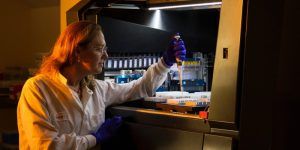
Research has shown that while environmental factors mediate gene expression in individuals, their effects can be passed down through epigenetic code. Indeed, such effects, independent of the underlying genetic code, can carry across multiple generations (Masterpasqua, 2009).
To put it more simply: the life we lead now affects the physical and mental wellbeing of our children yet to be born.
Experience changes our epigenome
Multiple factors have been identified that affect the epigenome (Masterpasqua, 2009):
Caregiving
Research has confirmed that even early caregiving can lead to epigenetically induced physiological and behavioral changes in humans.
The quality and quantity of caregiving influences the subtle and complex changes seen in how DNA is expressed; scientifically speaking, the “DNA methylation patterns, glucocorticoid receptors, and reactivity of the HPA axis” (Masterpasqua, 2009).
Mental health during pregnancy
Although further research is required, it appears that mental health issues, such as low mood and depression during pregnancy, can be epigenetically passed on to children and, potentially, subsequent generations.
Inheritance of depression and schizophrenia
Major psychological disorders in adulthood, such as schizophrenia, clinical depression, and bipolar disorder, are linked to epigenetic changes passed from parents to their children.
Future research is needed, considering the many factors involved in changes to the epigenome, including hormonal and psychosocial factors.
Gene Expression: How Does Epigenetics Work?
“Epigenetics is the study of how your behavior and environment cause change that affects the way your genes work” (Centers for Disease Control and Prevention, 2020). Such changes do not alter the DNA sequence (so can be reversed), but how it is read.
Therefore, epigenetic changes affect gene expression, turning them off and on, impacting the creation of proteins.
How much we exercise and what we eat and drink changes our epigenome, impacting our bodies’ and brains’ development and function. Environmental factors are also crucial, including low-dose radiation, foreign chemicals, and early parenting (Masterpasqua, 2009).
Therefore, both behavior and environment impact genetic expression, altering how our bodies and brains work and ultimately affecting our behavior.
Epigenetic changes affect our gene expression through a set of complex biochemical processes, including (Centers for Disease Control and Prevention, 2020):
- DNA methylation
Methylation turns genes off (and demethylation turns them on) by adding a chemical group to specific locations in the DNA that blocks proteins. - Histone modification
DNA is wrapped around proteins and prevents them from being read, thereby turning them off. - Non-coding RNA
Coding RNA makes proteins, and non-coding RNA recruits proteins to turn genes off or on.
6 Mechanisms and Factors of Epigenetics

They occur in response to the following factors:
- Development
Epigenetic changes begin before birth. While all cells have the same DNA, epigenetics determine how each cell will function, turning genes on and off so that the cells are appropriate for their role (e.g., liver, brain, heart, etc.). - Age
Our epigenetics change across our lifespan. While newborns have the greatest DNA methylation, the elderly have the lowest. - Reversibility
Changes to epigenetics need not be permanent. Changing the environment or behavior (such as smoking) can lead to the reversal of the changes.
Our body has a complicated two-way relationship with its epigenetics (Centers for Disease Control and Prevention, 2020):
- Infections impact our epigenetics, impacting our immune system and helping germs survive.
- Epigenetic changes can increase cancer risk.
- A good diet can alter the epigenetics of both a pregnant woman and the unborn baby.
Epigenetics & personal health: can we control our own future
5 Recommended Books
Many books specialize in genetics, epigenetics, psychology, evolutionary biology, intelligence, thinking, and behavior.
However, texts that provide an interdisciplinary view, connecting genes and their expression to human psychology and behavior, are less common.
The following books all offer fascinating insights from the vantage points of their author’s expertise. A more complete grasp of the subject may require combining the knowledge from several of the texts.
1. The Selfish Gene: 40th Anniversary Edition – Richard Dawkins
Professor of evolutionary biology Richard Dawkins explains his thoughts behind genes and their connection with what he calls their ‘survival machine’ – us.
Groundbreaking when first published in 1976, it remains an insightful, and at times poetic, journey into life itself.
The book should take pride of place on the bookshelf of anyone seeking to understand the connection between our genes and our survival.
Find the book on Amazon.
2. The Greatest Show on Earth: The Evidence for Evolution – Richard Dawkins
While Dawkins is often best known for his rally against creationism, it would be easy to forget all that his writing offers the interested reader.
The Greatest Show on Earth (2010) is a pleasure to read and provides perhaps the most approachable text to introduce the layperson to the complexity of how we came to be as we are.
From genes to the Human Genome Project and their impact on humans and humanity, it is breath taking.
Find the book on Amazon.
3. Blueprint: How DNA Makes Us Who We Are – Robert Plomin
Perhaps out of the five books included, Robert Plomin’s Blueprint (2018) provides the most complete insight into the connections between DNA, psychology, and behavior.
Favoring the nature rather than nurture approach to human development, his book will enlighten and challenge readers while filling in many of the gaps in their knowledge of the relationship between genetics and psychology.
Find the book on Amazon.
4. The Evolution of the Human Head – Daniel E. Lieberman
Harvard chair of evolutionary biology Daniel Lieberman sets out to explain how the head has evolved and why it differs from those of our great ape cousins.
While covering crucial aspects of the brain’s development and location, Lieberman also discusses several sensory organs (tongue, olfactory, hearing) and how they provide the information necessary to choose how we respond to the environment.
Find the book on Amazon.
5. Evolutionary Psychology: An Introduction – Lance Workman and Will Reader
This is a wonderful book for readers keen to learn what evolutionary psychology is, along with its challenges and challengers.
Crucial to understanding evolutionary psychology, this book includes a history of the field along with the latest research. The text is clear and easily understood and a worthwhile read for anyone considering the impact of evolution on human psychology.
Find the book on Amazon.
4 Best Podcast Episodes on the Topic
There are several podcast episodes available that introduce the listener to the impact of genes on our psychology, several of which are included below.
1. Robert Plomin on the Genetics of Intelligence
From the BBC’s excellent The Life Scientific, this episode provides a fascinating discussion of how genetics influences our intelligence.
Based on the findings from a long-term twin study, he argues that genetics accounts for between a half and two-thirds of human intelligence.
2. Robert Plomin on How DNA Makes Us Who We Are
A second podcast episode featuring author Robert Plomin, this time covering in depth his theories surrounding what influences our genetics and their effect on our thinking and behavior.
3. How Learning About Our Genes Offers Both Benefits and Limitations
This excellent podcast episode from the School of Public Health at the University of Michigan discusses the importance of genetics to public health and how our genes drive our wellbeing.
4. On Human Nature and Human Progress
As part of his long-running podcast, Scott Barry Kaufman takes the opportunity to speak to legendary linguist Noam Chomsky regarding a range of subjects, including behavioral genetics and identity versus human nature.
PositivePsychology.com’s Relevant Resources
We have many resources that will help you identify and develop new and existing skills and strengths.
- Exploring Character Strengths is a valuable and practical tool for identifying and exploring your strengths.
- This Past, Current, & Future Strengths Worksheet will give you four questions for reflecting on your strengths and using them in goal setting.
- How To Use Your Signature Strengths offers a few example ways to apply your signature strengths in life.
- These simple questions to look at strengths help older children explore their strengths for later use and increased self-confidence.
- Growing Stronger From Trauma identifies the positives in traumatic events in order to use them as a source of optimism and to recognize your personal strengths.
If you’re looking for more science-based ways to help others enhance their wellbeing, this signature collection contains 17 validated positive psychology tools for practitioners. Use them to help others flourish and thrive.
A Take-Home Message
Darwin’s (1859) theory of evolution by natural selection is beautiful in its ability to explain the diversity of all life through a relatively simple theory.
It remains one of the most important and impactful ideas within biology and, most likely, beyond. Not only does it affect the body in which we inhabit, but equally our minds and how we behave.
Yet adding in all that we have learned since it was first published regarding genetics, epigenetics, neuroscience, psychology, and cognitive science, it leaves us with an incredibly complex, interrelated set of ideas and theories.
This article does not attempt to answer all the questions that inevitably arise from considering the influences of heredity and the environment on our genes and thought processes. Nor does it cover the entire connection between such thinking and the behavior that results.
However, it offers an introduction and a discussion of our current understanding of genetics, epigenetics, and thought processes while pointing to the challenges in understanding.
There are many opposing views surrounding the role of genes in who we are and how we behave. They encourage passionate arguments and counterarguments. Hopefully, this article provides a grounding in several central aspects and an opportunity to connect separate scientific disciplines.
Future research will undoubtedly shed additional light on the link between genes and behavior and ultimately what it means to be human.
We hope you enjoyed reading this article. Don’t forget to download our Positive Psychology Exercises for free.
- Centers for Disease Control and Prevention. (2020). What is epigenetics? Retrieved February 12, 2021, from https://www.cdc.gov/genomics/disease/epigenetics.htm.
- Comfort, N. (2018, September 25). Genetic determinism rides again. Nature. Retrieved February 12, 2021, from https://www.nature.com/articles/d41586-018-06784-5
- Darwin, C. (1859). On the origin of species. Oxford University Press.
- Dawkins, R. (2006). The selfish gene: 30th Anniversary edition. Oxford University Press.
- Dawkins, R. (2010). The greatest show on Earth. Black Swan.
- Jackson, T. (2016). Genetics in minutes. Quercus.
- Lieberman, D. E. (2011). The evolution of the human head. Belknap Press.
- Masterpasqua, F. (2009). Psychology and epigenetics. Review of General Psychology, 13(3), 194–201.
- Plomin, R. (2018). Blueprint: How DNA makes us who we are. MIT Press.
- Workman, L., & Reader, W. (2015). Evolutionary psychology: An introduction. Cambridge University Press.
Read other articles by their category
- Body & Brain (49)
- Coaching & Application (57)
- Compassion (26)
- Counseling (51)
- Emotional Intelligence (24)
- Gratitude (18)
- Grief & Bereavement (21)
- Happiness & SWB (40)
- Meaning & Values (26)
- Meditation (20)
- Mindfulness (45)
- Motivation & Goals (45)
- Optimism & Mindset (34)
- Positive CBT (28)
- Positive Communication (20)
- Positive Education (47)
- Positive Emotions (32)
- Positive Leadership (18)
- Positive Parenting (4)
- Positive Psychology (33)
- Positive Workplace (37)
- Productivity (16)
- Relationships (46)
- Resilience & Coping (36)
- Self Awareness (21)
- Self Esteem (37)
- Strengths & Virtues (31)
- Stress & Burnout Prevention (34)
- Theory & Books (46)
- Therapy Exercises (37)
- Types of Therapy (64)

